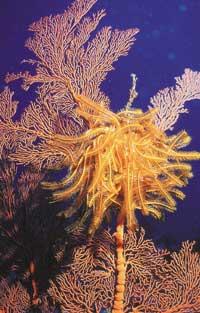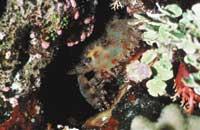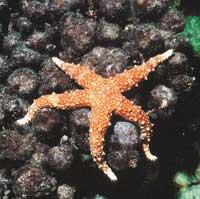Lifou 2000, in search of the treasure

The ‘islands of loyalty’ emerged from volcanic eruptions about 10 million years ago. The state of the reefs after volcanic activity was ideal for creating coral atolls, and thus these rich reefs were formed. On the other hand, the tectonic movements of the Australian plate exposed to the current level the ‘Loyalty Islands’, submerged in the quaternary.
The Lifou 2000 study, with outstanding results, was conducted by members of the Museum of Natural History of France and the Research Institute for Development on Lifou Island, the largest of the Pacific ‘Loyalty Islands’. This island is a paradise for biologists and ecologists from all over the world, as its coral reefs have an enormous biodiversity. But although this research is not the first, it has confirmed and highlighted the size of its biological wealth.
This island lacks a surface hydrographic network, that is, rivers and lakes. Therefore, rainwater is filtered until it meets that of the sea and, having less density, forms a small thin layer. The infiltration, consequence of karst erosion, produces in the interior sweet waters and caves and cliffs covered by sea waters on the coast.
Biodiversity Witness
The inventory work has been carried out on 4,500 hectares (45 km 2), highlighting for the moment a large number of mussels species. In fact, the 35 scientists who have worked on this work have broken all existing brands to date, confirming that there are 2.5 times more mussel species than expected.
To reach this conclusion they have been based on the accounts of eight families of mussels. In the previous inventories 266 species of these families were counted and this time 627 species! If we apply this ratio to the other mussel species, that is, to the 1,076 species identified so far, there would be 2,500 species in these areas! 1.5 times more than in the entire Mediterranean (2.9 million km 2)!

In addition, in the district of Koumac a complete inventory has been made and it has been proven that the mussels (603 species) of these eight families account for 22% of the total species. Applying this data to the fauna of Lifou, again we approach an approximate number of species of about 2,500.
However, the research work of all the samples collected has been developed for a few years and we will have to see the exact number of species they identify.
Biodiversity does not enter a reserve

As already mentioned, this study has counted and identified thousands of mussel species and its distribution has surprised. In total, 66 zones have been inventoried, being between 26 and 29% of the species in a single area. In addition, less than 40% of species have been found in more than six areas.
Therefore, it is clear that coral reefs are complex areas with rare species. This simplicity is measured on two levels: biological simplicity and ecological simplicity. The first depends on the number of individuals of each species and the second on the number of areas in which the same species can be found.
Considering this richness and uniqueness, the study questions the function of marine reserves and asks a question of reflection on whether the protection of a wide area guarantees the protection of the biodiversity of the region.





